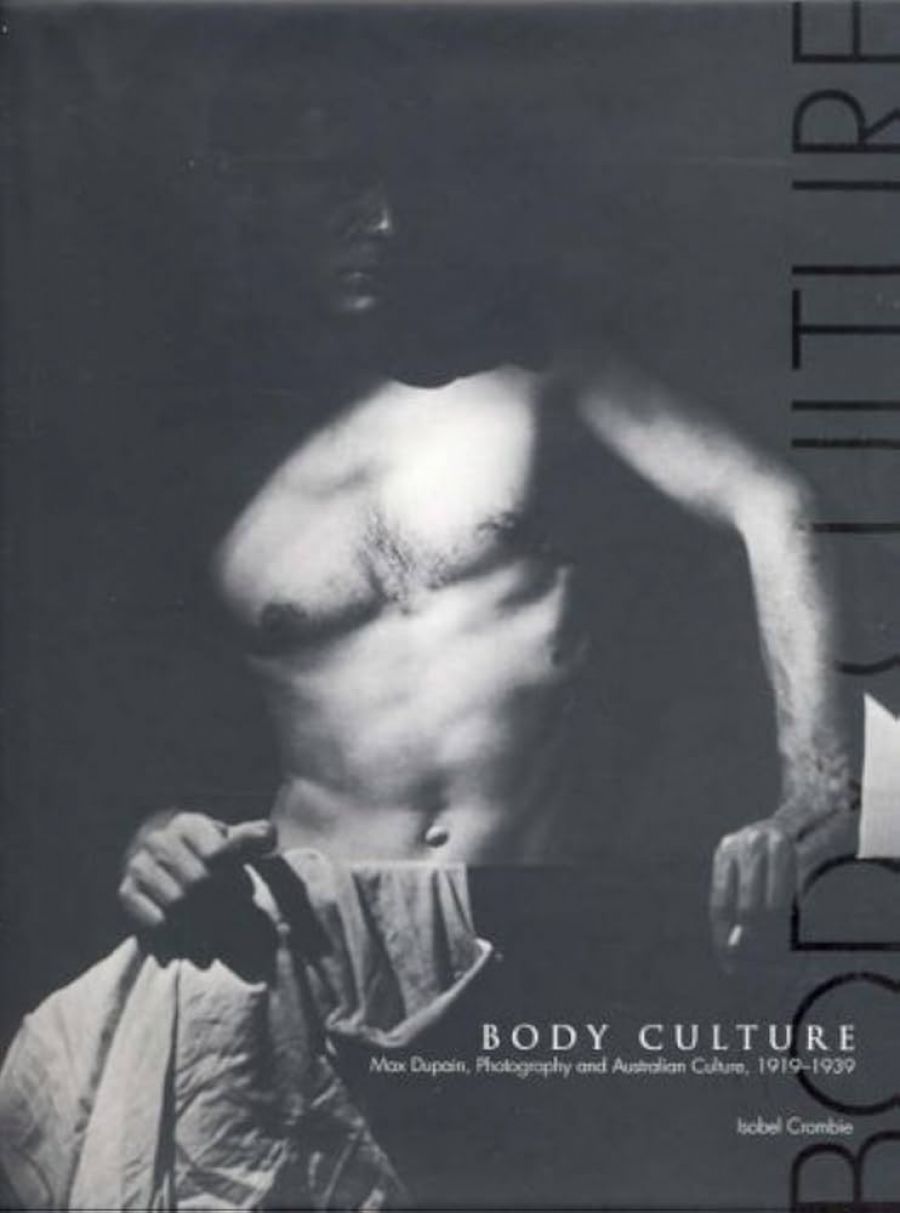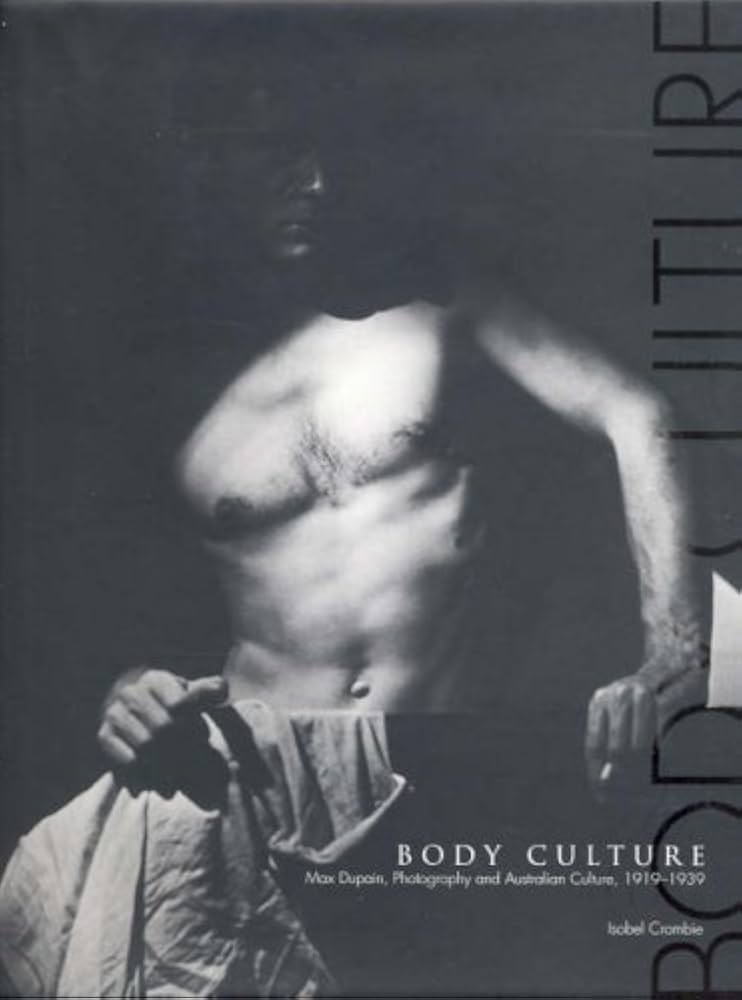
- Free Article: No
- Contents Category: Photography
- Review Article: Yes
- Article Title: Dark Energies, Long Shadows
- Online Only: No
- Custom Highlight Text:
Like many a portentous new (electronic) media advocate today, the US photographer Paul Strand opined in his 1922 essay ‘Photography and the New God’ that photography unified science and art and therefore offered a new creative path. God talk was not inappropriate, because the period also saw the widespread sway of vitalism, the metaphysical doctrine that living organisms possess a non-physical inner force or energy that lends them life.
- Book 1 Title: Body Culture
- Book 1 Subtitle: Max Dupain, photography, and Australian culture, 1919–1939
- Book 1 Biblio: National Gallery of Victoria & Peleus Press, $89.95 hb, 210 pp
- Book 1 Cover Small (400 x 600):

- Book 1 Cover (800 x 1200):

Though scientifically discredited by the mid-nineteenth century, vitalism formed sundry avatars in the West during the early twentieth century, from American conceptions of ‘energy’ to Henri Bergson’s élan vital. Its influence seemingly informed Clive Bell’s theory of Significant Form, certainly encouraged D.H. Lawrence’s worship of ‘blood consciousness’, and probably inflected the Australian Jindyworobak literary movement, with its interest in supposedly unsullied Aboriginal culture and – like Max Dupain – the purifying Australian sunlight.
Concomitant cults of sun worship and fitness led to directions inimical to the manifestations of modernity enabled by science, hence to the contradictions apparent in Dupain’s interwar photography. He was a convert to the new photography emanating from Europe, especially per the magazine Das Deutsche Lichtbild, but was deeply suspicious of industry. His Homage to D.H. Lawrence (1937) shows an arm imperilled by a large flywheel, while his Doom of youth (also 1937) shows a naked young man crucified in ‘a bleak image of mechanistic catastrophe’, as Isobel Crombie describes it – a memory and prophecy of war.
The trigger for Crombie’s book, she says, was Dupain’s nude studies of the 1930s, especially on the beach – males, females, families – which came to particular attention after the photographer’s death in 1992. These, Crombie divined, reflected a broader and deeper interest in vitalist ‘body culture’, in German writer Wolfgang Graeser’s phrase, than hitherto recognised. She consequently placed the work of Dupain, by any reckoning one of Australia’s most important photographers to date, within the broad field of cultural studies. She significantly expands the ground-breaking work undertaken by other scholars on Dupain and contemporaries, and, in particular, the revelatory research of Gael Newton, complemented, more latterly, by Helen Ennis, Geoffrey Batchen, and others.
Dupain was at the height of his powers between the wars. Crombie found aspects of his work tracking alongside all the variations she developed on the body culture theme, including the surf-lifesaving cult, with its Anzac desert/beach overtones; nudism, based on the German Nachktkultur sunbathing movement or its English derivative, Gymnosophy – and, most worryingly, eugenics. She discusses a wide range of players, including the Lindsays (Norman, Lionel and Jack), photographers Laurence Le Guay and Olive Cotton, and painters Freda Robertshaw and Charles Meere. Max Dupain’s father, George, emerges as being particularly significant for his impact not only on his son but on the culture at large. He ran an influential gymnasium – it included a library of some 10,000 volumes on fitness – and published pamphlets warning about racial degeneration and advocating survival through strength. It is Crombie’s exploration of such matters in the context of the visual arts that gives Body Culture its particular fascination.
Dupain’s oeuvre is uneven, its informing discourses and retrospective interpretation various. He frequently tapped into the salving excess of art, but Crombie shows him to be a product of his culture as much as an auteur. That culture was coterminous with that of the commercial world, a zone he never entirely renounced, in spite of eventually labelling his pre-war fashion and advertising photography ‘a cosmetic lie’. This work was supercharged with a nexus of Nietzschean ideas about health, fitness and proto-fascistic strength, and complemented by the more intuitive explorations of his ‘personal’ work. Dupain’s Sunbaker, 1937 (the iconic version that Crombie reproduces, not the one that Dupain first published in 1948), shows a man resting in a bleached void, wet from the surf. He draws the viewer to the glistening darkness of his body yet rushes towards us like Superman, or a superman, in flight. (An eponymous montage by Dupain from 1934 resembles the comic book character not at all.) Crombie’s book makes his appearance in Australia seem inevitable.
Body Culture is important as a work of historical analysis. The role of eugenics in the formation of Australian visual culture has never been so fully elaborated. The book is also worth reading as a means of better understanding the social and political pass to which this and other countries have come. Body culture is alive and well in plastic surgery and the market for photographs of nude Olympic athletes. Eugenics is developing a new face in genetic engineering, so to speak, while fear of the stranger animates border protection policies. Echoes of a holocaustal mindset, the dream of living in a world cleansed of opposition or difference, reverberate in terrorist fantasies and the Bush doctrine of pre-emptive war based on suspicion alone, rather than on clear and present danger.
Crombie’s prose is lucid, her approach methodical, her stance judicious and fair-minded. She avoids undue editorialising, but takes her reader, whether general or specialised, painlessly through a wide spectrum of ideas and issues, including the minefield of ‘fascination with Fascism’. The book is user-friendly: simply laid out, it features surprisingly large print, which will be appreciated by readers of a certain age, and a generous complement of high-quality illustrations, coloured or tinted as the material demands. In themselves, they render the publication a desirable acquisition. A black mark to the sub-editor who removed dates from footnotes; a big tick for pretty much everything else.
Dupain considered himself to be thoroughly Australian, seeking a style of photography to match, and virtually eschewing travel overseas. He was more Australian in darker ways than he knew, for which his velvety shadows seem an obvious metaphor. Yet even (for him) run-of-the-mill works like his Souvenir of Cronulla (1937), in which a glittering veil of foam washes halfway down a naked woman, evince a life-enhancing sensuality. Like Orwell’s Julia in 1984, Dupain knew that sex could confound ideology. He was a passionate but also a decent individual, self-disciplined and robust. I became friends with him when I was a curator in the 1980s. I once felt able to ask him why he broke up with Olive Cotton. They separated in 1941 after two years of marriage and many prior years of friendship. Her decidedly erotic picture of him, Max after surfing (c.1939), adorns the cover of the book. He smiled ruefully and sighed: ‘the impetuosity of youth.’


Comments powered by CComment